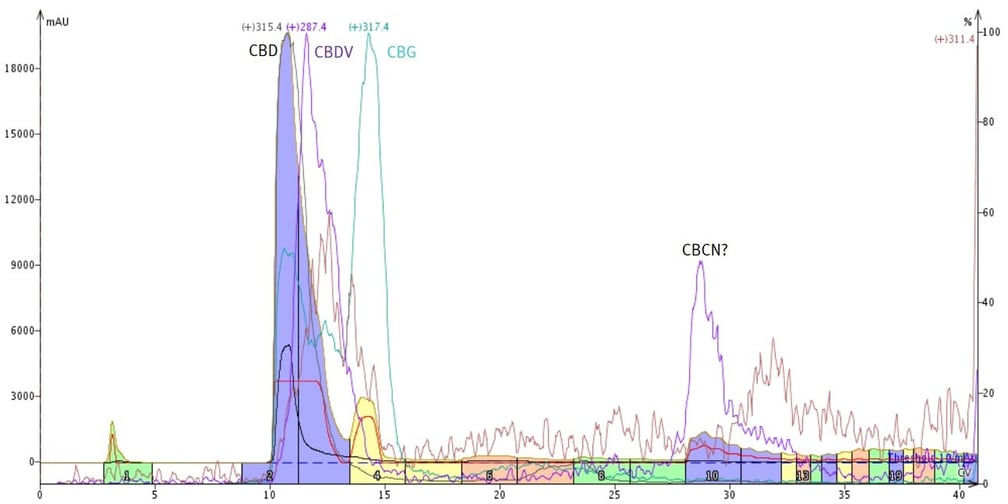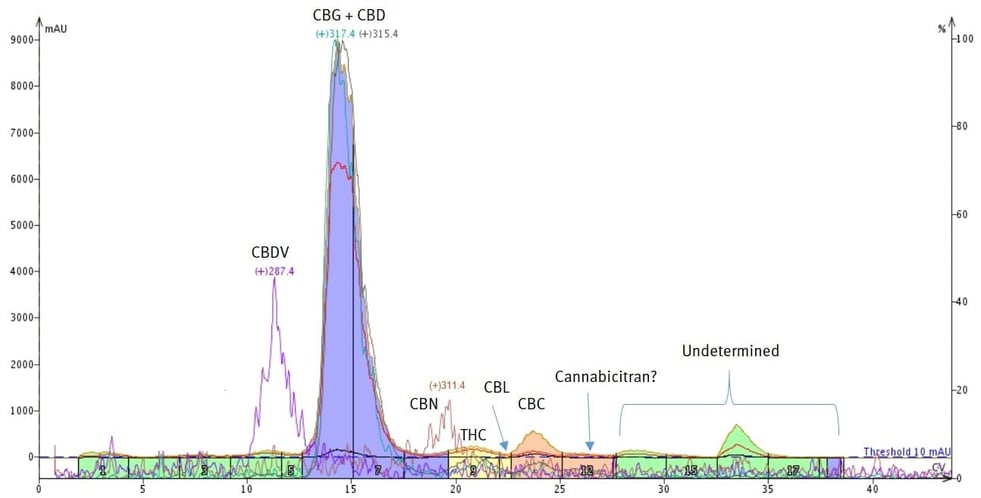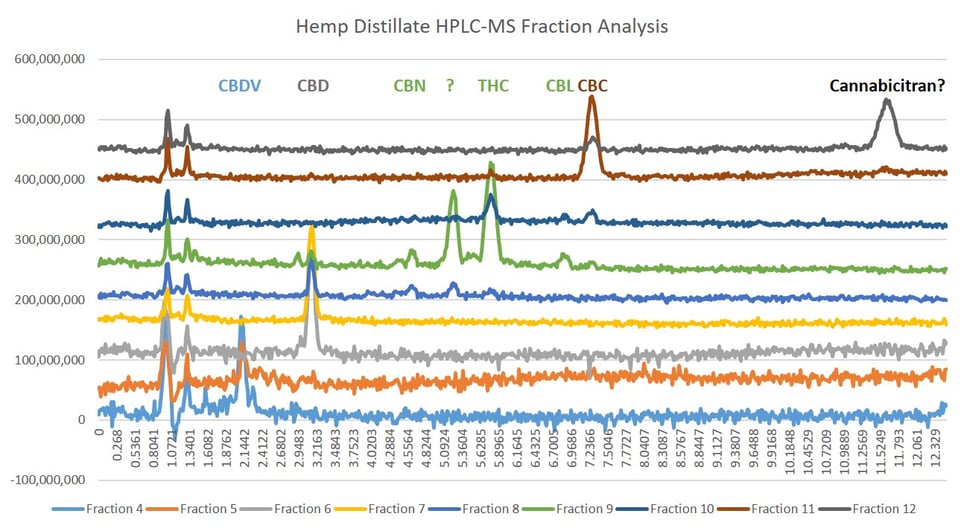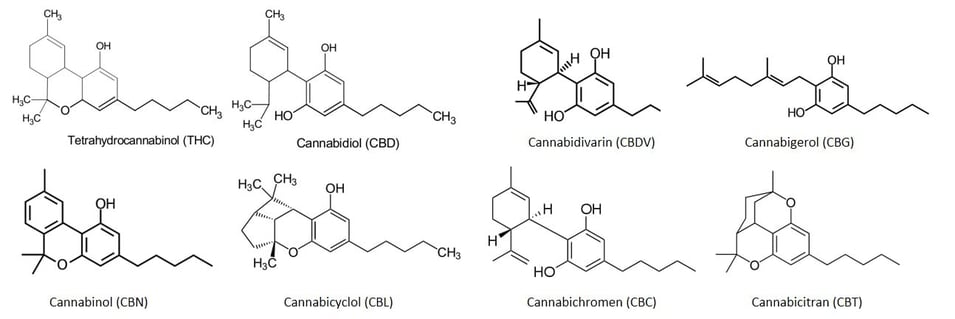Previously, I have posted on a normal-phase flash chromatography method to separate and isolate CBG from a CBD-rich hemp distillate. CBG is just one of many naturally occurring minor cannabinoids of interest in this fast-growing market.
In this post, I share my results using reversed-phase flash chromatography to separate and collect other various cannabinoid compounds.
While normal-phase flash chromatography is effective for CBG purification, most other cannabinoids require reversed-phase chromatography (e.g. separation of CBD from THC). Some of the other minor cannabinoids of interest include cannabinol (CBN), cannabichromene (CBC), cannabicyclol (CBL), and CBT (cannabicitran).
Though chemically similar, the various cannabinoid chemistries are different enough that reversed-phase chromatography is able to separate many of them while normal-phase can really only separate CBG away from the others, Figure 1.

Figure 1. Normal-phase flash chromatography can separate CBG away from other cannabinoids but is challenged to separate CBD, THC, and other minor cannabinoids.
My reversed-phase flash chromatography method separated many compounds while the system's in-line mass detector (I used an Isolera® Dalton 2000) assigned a MW to many of them, providing some idea of compound ID, Figure 2.

Figure 2. Reversed-phase flash purification of a hemp distillate using a Biotage® Sfär C18 column and a Biotage Isolera Dalton 2000 flash system with in-line mass detection.
After reversed-phase purification, I analyzed the collected fractions using an HPLC-MS using a published method by Restek that shows the separation of 16 cannabinoids to verify my compounds' identities.
Besides helping me to identify which of the cannabinoids were present in my collected fractions, it also found two unidentified compounds, both with a molecular weight (MW) of 314 (detected as the protonated ion, 315). For reference, the MW of THC, CBD, CBC, CBL, and CBT are all 314 and are all detected as 315 using a mass spectrometer.
The HPLC-MS analysis showed I isolated pure CBDV, CBD, CBC, and one of the unidentified compounds with MW 314. The other unidentified MW 314 compound co-eluted with THC, CBN, and CBL, Figure 3. I have correlated the cannabinoid and its fraction by color to help show where each of the detected compounds were found.

Figure 3. Reversed-phase HPLC-MS analysis of the reversed-phase flash purification fractions. The HPLC-MS analysis used a Restek ARC C18 column and the referenced method. The colored lines are used to differentiate the each collected fraction's HPLC-MS analysis. Across the top is the ID of the cannabinoid found in the fraction using the same color. For instance, the green trace is the HPLC-MS analysis of fraction 9 and it contains CBN, the unknown compound, THC, and CBL.
While searching online for possible identities of the two unknown compounds, I found a book chapter from Forensic Science and Medicine: Marijuana and the Cannabinoids authored by Rudolph Brenneisen (Chapter 2), which has the chemical structures of 58 cannabinoids, as well as many terpenoids, alkaloids, and other compounds. One of the cannabinoids listed was cannabicitran, which, as previously stated, also has a MW of 314.
Though not one of the 16 cannabinoids in the Restek application, cannabicitran’s chemistry (two ether groups and no polar hydroxyl groups), makes me believe it is more lipophilic than the other cannabinoids, Figure 4, and is likely the compound found in flash chromatography fraction 12 (Figure 2).

Figure 4. Structures of two major (THC and CBD) and six minor cannabinoids of interest.
As for the other unknown compound with a MW of 314, the hunt continues for a possible ID. It is not delta 8-THC (elutes after delta-9) as shown in the Restek data. In fact, it does not correlate with any of the 16 cannabinoids in the data. If you have any ideas about what it may be, let me know.
If you would like to learn more about flash chromatography and cannabis, download our infographic on the subject below.

 Organic Workflow
Organic Workflow Peptide Workflow
Peptide Workflow Scale-Up Flash Purification
Scale-Up Flash Purification  Sample Preparation
Sample Preparation Biomolecule Purification
Biomolecule Purification Oligo synthesis
Oligo synthesis Scavengers and Reagents
Scavengers and Reagents Service & Support
Service & Support Accessories & Spare parts
Accessories & Spare parts Investors
Investors Reports & News
Reports & News The Share
The Share Corporate Governance
Corporate Governance Calendar
Calendar Sustainability
Sustainability Our Offering
Our Offering Our History
Our History Our Locations
Our Locations Leadership
Leadership